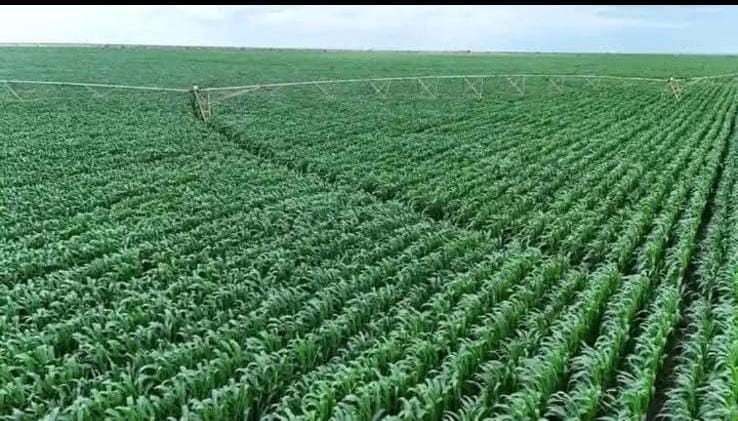By Kiboga Warandah
Theoretically, many have never understood the concept of the blue economy, or nations have ignored its potential. Yet this informal facet of the economy, though often overlooked, is both adequate and significant, as it refers to the sustainable use of oceanic and freshwater resources for economic growth, improved livelihoods, and environmental health. It represents a paradigm shift from exploitative practices to regenerative, inclusive, and long-term development strategies. In East Africa, Lake Victoria—Africa’s largest lake and the second-largest freshwater lake globally—is uniquely positioned to become a cornerstone of the region’s blue economy. Supporting over 40 million people across Kenya, Uganda, and Tanzania, this transboundary water body presents immense, yet largely untapped, potential in tourism, aquaculture, and water transportation.
In this piece, I explore these three pillars through a case-based lens, demonstrating how strategic investment and cross-border collaboration can transform Lake Victoria into a sustainable economic engine. Through successful models such as Victory Farms, as well as unexplored high-potential regions like the greater Suba, the western Kenya Lakeline, and the scenic islands, this paper calls for immediate, large-scale, and inclusive action from governments, private-sector investors, and development partners.
Tourism: Unlocking Cultural Wealth and Natural Beauty
While tourism remains one of the most underdeveloped economic sectors in the Lake Victoria basin, the lake has demonstrated significant contribution to Kenya’s GDP. The World Tourism Organization notes that the lake accounted for 8.2% of Kenya’s GDP in 2019. While the region boasts incredible natural beauty, biodiversity, and cultural heritage, much of its potential lies dormant due to lack of infrastructure, inadequate marketing, and policy neglect. However, the opportunities are enormous and urgent.
The serene and relatively undeveloped beaches of Gwasii, Kaksingri, Mbita, Karungu, Kadem, and Muhuru, stretching all the way into Tanzania’s lakeline, present golden opportunities for the establishment of boutique resorts, eco-lodges, and wellness retreats. These locations offer a tranquil alternative to the overcrowded Indian Ocean beaches, and with proper investment, they can attract both domestic and international tourists seeking authentic and peaceful experiences.
One particularly compelling site is the Nyamgondho Shrine in Nyandiwa, a sacred site steeped in Luo folklore, centered around the mythical figure Nyamgondho wuod Ombare. With its rich mythological significance, the shrine has the potential to anchor a niche in spiritual, cultural, and heritage tourism. By developing structured cultural centres, training local tour guides, and preserving surrounding ecosystems, this site could become a hub for African mythological tourism, creating employment while preserving intangible cultural heritage.
Moreover, island tourism around Lake Victoria remains virtually untouched. Islands such as Kiwa, Kibuogi, Atego, Ukerewe, Gana, Bukasa, Bulago, and even the contentious Migingo possess distinctive geographic and cultural features that are ideal for eco-resorts, bird-watching sanctuaries, and cultural immersion experiences. By positioning these islands as alternative destinations, especially during peak seasons on the coast, the East African Community (EAC) can diversify its tourism portfolio, stimulate rural economies, and ensure more equitable distribution of tourism revenues.
To make this a reality, Public-Private Partnerships (PPPs) through Public-Private Investments (PPIs) must be proactively pursued. Governments should offer incentives such as tax reliefs, lease guarantees, and infrastructure support to attract investment in tourism. Meanwhile, community engagement is critical to ensure that development is inclusive, culturally sensitive, and environmentally sustainable.
Aquaculture: The Victory Farms Blueprint for Sustainable Growth
Essentially, inland lakes are pivotal to regional aquaculture economies. According to the World Bank, aquaculture now supplies nearly 60% of global seafood, with a projected $1.5 trillion investment opportunity by 2050, potentially generating 22 million jobs. ECOWAS reports show West Africa’s inland fisheries production rose from 1.76 million tons in 2008 to 1.93 million tons in 2020, yet per capita consumption remains below global averages.
Lake Victoria has long been a cornerstone of East Africa’s fishing economy. However, overfishing, pollution, and invasive species have severely depleted wild fish stocks. This crisis, while alarming, opens the door to aquaculture as a resilient, sustainable, and transformative alternative.
The leading example in this space is Victory Farms, headquartered in Kenya. As the largest aquaculture enterprise in sub-Saharan Africa, Victory Farms represents a groundbreaking shift in how fish farming is conducted, not just at scale but also with deep environmental and social consciousness. Having personally worked within the Human Resources department of the company, I have seen firsthand the transformative power of aquaculture. The firm has created thousands of jobs, many of them filled by women, youth, and persons with disabilities, thus directly addressing unemployment and gender inequality in riparian communities.
Victory Farms operates across the entire value chain, from hatchery to cold-chain logistics, and employs environmentally responsible cage-farming techniques. Its success has had a multiplier effect on surrounding industries, including feed manufacturing, packaging, retail distribution, and transport logistics. More importantly, it has restored dignity and stability to households that previously relied on the unpredictable yields of wild fishing.
Victory Farms stands as a living testament to how private enterprise can drive inclusive growth. Governments and regional development agencies must scale such models across the lake, supporting local entrepreneurs with access to credit, training, and technology. With smart regulation, environmental safeguards, and community integration, aquaculture can become a pillar of both food security and economic resilience in the Lake Victoria basin.
Water Transportation: The Artery of Regional Integration
Given its expansive nature and cross-border reach, Lake Victoria holds untapped potential as a transportation hub for East Africa. Water transport is not only cost-effective and environmentally friendly, it is also essential for connecting remote communities, enhancing trade, and integrating regional markets.
Currently, water transportation on the lake is hampered by inadequate infrastructure, poor docking facilities, and security concerns. To fully exploit this mode of transport, a strategic overhaul is required. This includes building and upgrading fish landing sites, ferry terminals, docking piers, and passenger ports across key beaches. Small but critical interventions, such as equipping local ports with cold storage for fish and shelters for passengers, can dramatically improve efficiency and safety.
Security is another pressing issue. With increased movement of goods such as high-value aquaculture products, a lake security framework is essential. Deployment of trained maritime security personnel, installation of navigational aids, and regional coordination can significantly reduce incidences of piracy, accidents, and theft.
Encouraging signs exist, such as the revival of MV Uhuru and the modernization of ports in Kisumu, Mwanza, and Port Bell. However, these flagship projects must be matched by investments at the grassroots level, where the bulk of trade and transport occurs. Only then can the lake’s transport system become truly inclusive, integrated, and economically viable.
Conclusion
Method of Moment Quantile Regression (MMQR) analysis reveals that lower quantiles (rural communities) benefit less economically due to weak conservancy efforts and limited investment. The same analysis, as asserted through an African Development Bank paper on Africa’s inland tourism, shows that Lake Victoria is not merely a geographical feature; it is a lifeline for millions and a catalyst for transformation in East Africa. Through targeted investments in tourism, aquaculture, and water transportation, the lake can become a flagship model for the blue economy in Africa and beyond.
The story of Victory Farms reveals that sustainability and profitability are not mutually exclusive. The mystique of the Nyamgondho Shrine illustrates the power of culture to attract and inspire. The potential of lake-based transportation to connect nations underscores the importance of regional integration.
The African Development Bank’s PAIGELAC project in Rwanda demonstrates success through lake management plans, erosion control, and cooperative-led infrastructure. Yet these potentials will remain theoretical in Lake Victoria’s host nations unless matched by deliberate policy, strategic funding, and multilateral cooperation. Governments must create an enabling environment through regulation, infrastructure, and security. The private sector must step in with capital, innovation, and community engagement. And development partners must align funding mechanisms with locally driven solutions.
The time to act is not next year, not next decade. The time is now. Lake Victoria is waiting—not to be exploited, but to be harnessed. Not to be degraded, but to be restored. The blue economy is not just a concept. No—it is a necessity, and it begins with vision, courage, and collaboration.
The writer is an economist and fiscal policy analyst.


![IMG-20250723-WA0041[1]](https://westerninsight.co.ke/wp-content/uploads/2025/09/IMG-20250723-WA00411.jpeg)

